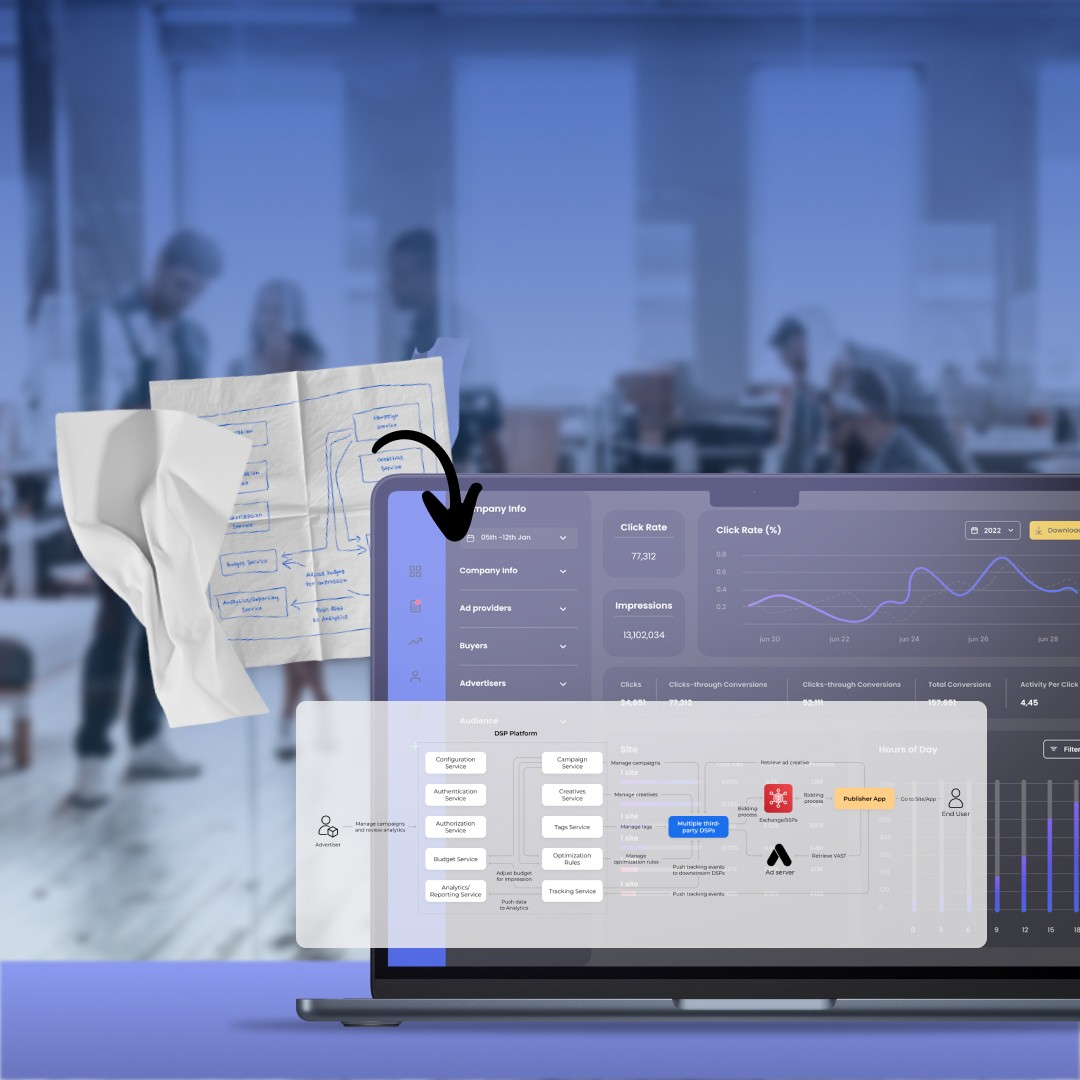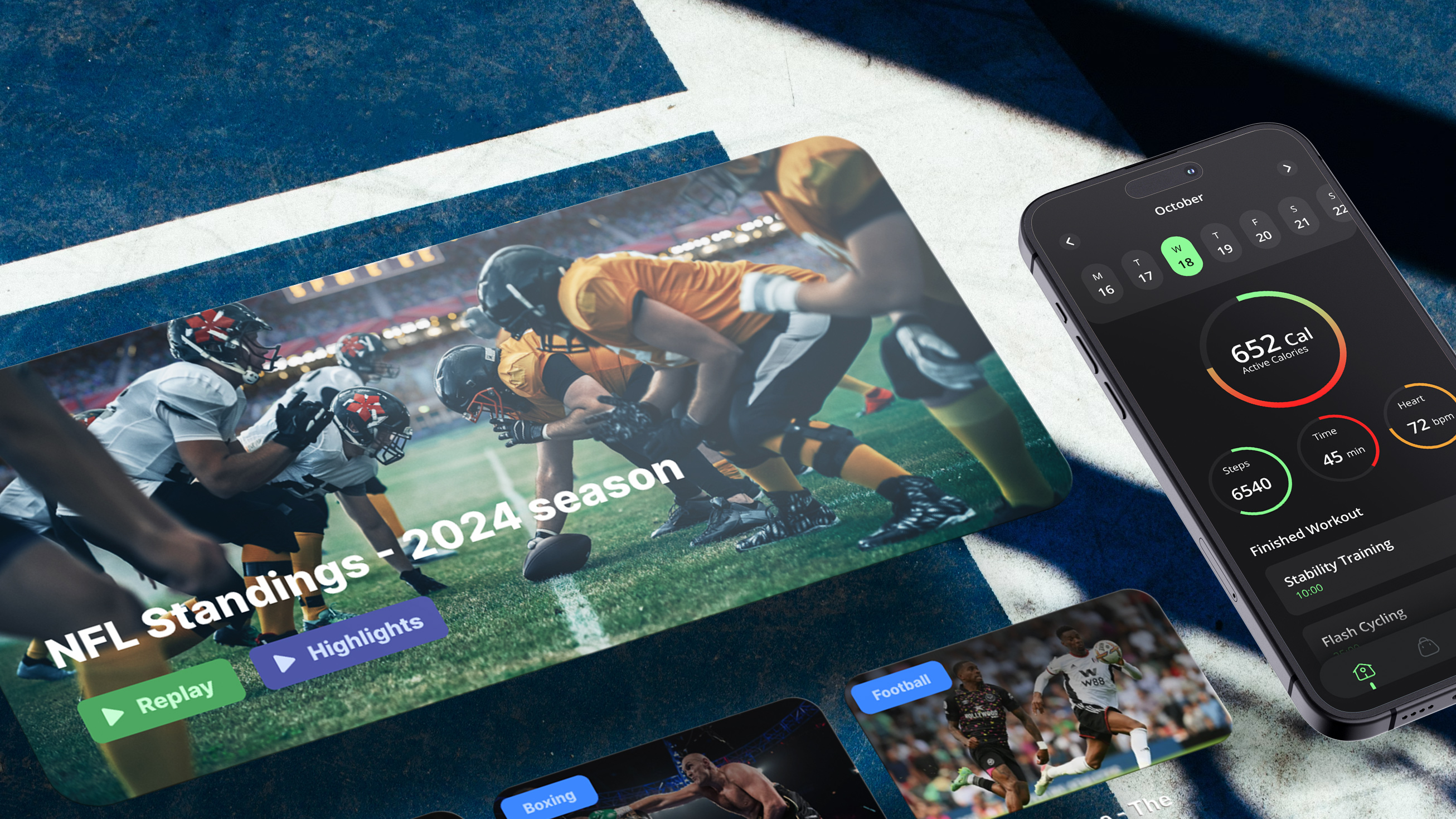Streaming has moved beyond simple entertainment — it has become a deeply personalized and data-driven experience, reshaping how audiences engage with content. According to Statista1, the OTT video market is set to reach $343.8 billion in 2025, driven by a convergence of factors: growing consumer demand for flexible viewing, advancements in content delivery, and the rise of innovative monetization strategies. With nearly 5 billion users expected by 2029, platforms are no longer just competing for subscribers — they are navigating a highly competitive, oversaturated market where differentiation is key.
To stand out, streaming services must offer unique content, deliver exceptional value, and ensure a seamless, high-quality viewing experience — all of which rely on the strength of their underlying technology. The role of an OTT provider is critical, as the platform must manage connected devices, analyze customer data, and optimize content delivery to meet evolving user expectations.
For businesses entering the OTT space, the challenge lies in choosing the right foundation. Some opt for custom-built platforms, tailoring every aspect of the experience to their audience, while others leverage ready-to-use solutions from the best OTT service providers, ensuring faster deployment with robust built-in capabilities. Which approach is best? Let’s take a closer look.
Breaking down the buy Vs. build dilemma
When a business starts thinking about a video service and a platform running behind it, one of the most frequent questions is: “Should I build or should I buy”?
First, we always highlight the following idea:
- Buying doesn’t necessarily imply a larger mid- or long-term investment compared to building. Off-the-shelf solutions provide a variety of monetization models. Besides, efforts spent on an OTT platform customization and maintenance can be too costly.
Second, we do think that some streaming services would benefit more from building their own product. Particularly, we’d advise custom OTT app development for the following projects:
- They want to differentiate themselves from the pack and see diversity as their key power.
- They want to control 100% of their innovation cycles and don’t want to wait for releases and updates from an OTT provider.
- Their own internal infrastructure allows them to reach the needed level of flexibility and velocity.
- They are free to invest in tech assets that create extra value for customers and that are not always present in ready-to-go OTT platforms: tailored admin panels, next-gen video players with extra opportunities, content recommendation engines, localization UX, etc.
How we can help
Let’s talk about the opportunities streaming services hold for your business and how Oxagile can unlock them.
Parameters to consider when choosing between OTT vendors
OTT video streaming providers focus on different aspects and industries to stand out from the competition. However, such platforms have a more or less common set of built-in features. This makes them a reliable and universal solution for most projects on the market.
- Content delivery network (CDN). A CDN comprises different servers into a single ecosystem so that a user can access content at high speed from any location. Major OTT players use global CDNs that deliver video from the closest local server instead of overwhelming the origin one. Multi-CDN strategies, edge computing, and AI-powered caching further enhance content delivery, reducing buffering and improving adaptive bitrate streaming. The expansion of 5G and satellite-based internet also plays a crucial role in ensuring high-speed access to ultra-HD and interactive content worldwide.
- SDK and API. An open software development kit (SDK) allows users to upgrade and customize a standard platform according to their business needs. Access to multiple APIs enhances the platform’s functionality with third-party tools, from integration with movie databases to payment processing. In 2025, AI-powered personalization, real-time engagement features, and blockchain-based security integrations make SDKs and APIs even more critical. Cross-platform compatibility is also a priority, ensuring seamless streaming experiences across mobile, smart TVs, gaming consoles, and AR/VR devices.
- Security features. In OTT, security covers a wide array of solutions, from user authentication and payment security to video content protection, AES encryption, and Digital Rights Management (DRM). Nowadays, AI-driven fraud detection, zero-trust security models, and forensic watermarking have become essential to combat piracy, unauthorized access, and credential stuffing. Blockchain-based identity verification is also gaining traction, ensuring secure user authentication and transactions.
- Monetization tools. A company selects the most relevant monetization model based on its business goals, whether it’s AVOD (ad-supported video on demand), TVOD (pay-per-view video on demand), or SVOD (subscriber video on demand). A platform can offer tools to optimize the selected model. For instance, an AVOD-based service now requires advanced AI-powered contextual targeting, server-side ad insertion (SSAI), and real-time analytics. Hybrid monetization models are becoming increasingly popular, combining subscription-based content with ad-supported free tiers to maximize revenue and audience reach. NFT-based content ownership and blockchain micropayments are also emerging as alternative monetization strategies.
- Content management system (CMS). A custom CMS is a huge time saver, streamlining video creation and distribution processes. A central repository stores video content, while specialized tools help edit, encode, and secure files. Currently, AI-driven content tagging, automated metadata enrichment, and cloud-native architectures make modern CMS platforms more scalable and efficient. The rise of interactive and immersive content formats, including VR and AR, has also prompted platforms to incorporate AI-powered recommendation engines and real-time audience insights into their CMS solutions.
Top 5 OTT platforms in the world for streaming business
Wowza
Wowza has positioned itself as one of the most versatile OTT platform providers, delivering low-latency streaming solutions for businesses that require real-time, high-quality video delivery. It is a top choice for government agencies, media companies, and enterprises that depend on a reliable, scalable OTT service provider to power their streaming infrastructure.
What makes Wowza stand out is its ability to handle complex streaming architectures without performance trade-offs. Its ultra-low latency technology, powered by WebRTC and adaptive bitrate streaming, ensures instant engagement for interactive broadcasts, financial market updates, and real-time sports coverage. Additionally, its custom-built CDN allows businesses to fine-tune playback, reducing reliance on external networks.
Wowza also emphasizes content security and compliance, offering AES encryption, DRM support, and tokenized authentication to protect premium video assets. As one of the most developer-friendly OTT vendors, it provides a comprehensive API suite that integrates with AI-powered analytics, closed captioning, and advertising platforms, enabling businesses to build fully customized streaming solutions.
Brightcove
As one of the most established OTT service providers, Brightcove is trusted by global media enterprises and corporate broadcasters for its scalable, cloud-based infrastructure. It excels in high-volume content distribution, ensuring seamless, high-definition streaming across various platforms.
What sets Brightcove apart from other OTT vendors is its AI-driven analytics and engagement tracking. Businesses leveraging Brightcove’s platform can optimize content delivery based on real-time user behavior, ensuring better audience retention. With multiple monetization options, including subscription-based (SVOD), transactional (TVOD), and ad-supported (AVOD) models, companies can tailor their revenue strategies effectively.
Brightcove’s extensive API ecosystem makes it highly adaptable for businesses needing third-party integrations with advertising networks, content management systems (CMS), and audience segmentation tools. As a leading OTT platform provider, Brightcove is a future-proof solution for businesses aiming to scale and diversify their video distribution strategies.
Vimeo OTT
Vimeo OTT is a highly accessible OTT service provider, ideal for businesses, independent creators, and media brands looking to launch premium-grade streaming services without extensive development overhead. Compared to enterprise-focused OTT vendors, Vimeo’s intuitive platform allows small to mid-sized companies to establish a turnkey streaming business with ease.
What makes Vimeo OTT unique is its focus on user experience and engagement. It provides a high-end UI/UX, enabling businesses to deliver a seamless viewing experience across multiple devices. With white-label streaming capabilities, brands can fully control their platform’s look and feel, ensuring consistency across their digital ecosystem.
Monetization remains one of Vimeo OTT’s strengths, offering flexible payment models, including subscription plans, rentals, and pay-per-view services. Additionally, its real-time audience analytics and content performance tracking provide essential data for optimizing engagement and retention strategies. With multi-platform embedding and social media integrations, Vimeo OTT is an excellent choice for businesses focused on multi-channel distribution and brand-driven content monetization.
Kaltura
Among OTT platform providers, Kaltura stands out for its developer-centric, open-source architecture, allowing businesses to build fully customizable video solutions. It is widely used by media enterprises, educational institutions, and corporate training providers looking for a scalable, API-first streaming infrastructure.
Kaltura’s modular design enables organizations to create tailor-made OTT services that integrate seamlessly into their existing workflows. Whether it’s live event broadcasting, interactive learning, or internal corporate communications, Kaltura offers end-to-end automation, reducing manual effort in video content management.
As an advanced OTT vendor, Kaltura extends its monetization flexibility beyond standard subscription and advertising models. It supports enterprise licensing agreements, hybrid paywalls, and AI-powered ad placement, allowing businesses to maximize revenue generation. With multi-layered security, including DRM encryption, role-based access control, and domain restrictions, Kaltura is a powerful OTT service provider for businesses dealing with sensitive or premium content.
Dacast
Dacast is a self-service OTT platform provider, perfect for businesses that need a turnkey, cloud-based video streaming solution. It is particularly well-suited for corporate communications, live event broadcasting, and niche media streaming, offering an accessible entry point for businesses without large technical teams.
What differentiates Dacast from other OTT vendors is its all-in-one monetization system. Unlike many platforms requiring third-party tools, Dacast includes built-in paywalls, subscription management, and ad insertion capabilities, allowing companies to monetize their content without complex integrations.
Its white-label streaming technology ensures full branding control, making it a preferred OTT service provider for businesses that want to maintain a consistent brand identity across their platforms. Security remains a priority, with AES encryption, tokenized access, and geo-restriction capabilities ensuring content remains protected from unauthorized use.
With real-time analytics and performance tracking, businesses can gather insights on viewer behavior, optimize streaming quality, and refine monetization tactics. Dacast is an efficient, cost-effective solution for organizations entering the OTT space, requiring a powerful yet easy-to-manage streaming platform.
Conclusion: Choosing the right OTT platform provider
Deciding whether to build a custom OTT platform or leverage an existing OTT service provider depends on your business goals, budget, and scalability needs. High-performance platforms like Wowza cater to real-time, low-latency streaming, while Brightcove and Vimeo OTT offer strong monetization and content distribution capabilities. Kaltura provides extensive customization, and Dacast offers an accessible, turnkey solution.
Regardless of the approach, success depends on having the right expertise. Developing or integrating an OTT platform requires a cross-functional team with deep knowledge of broadcast technology, video engineering, and software development. Whether you need a fully customized infrastructure or an optimized integration with an existing provider, the right team ensures seamless deployment, efficient monetization, and an outstanding viewer experience.
Sources:
1. Statista, “OTT Video — Worldwide.”






















